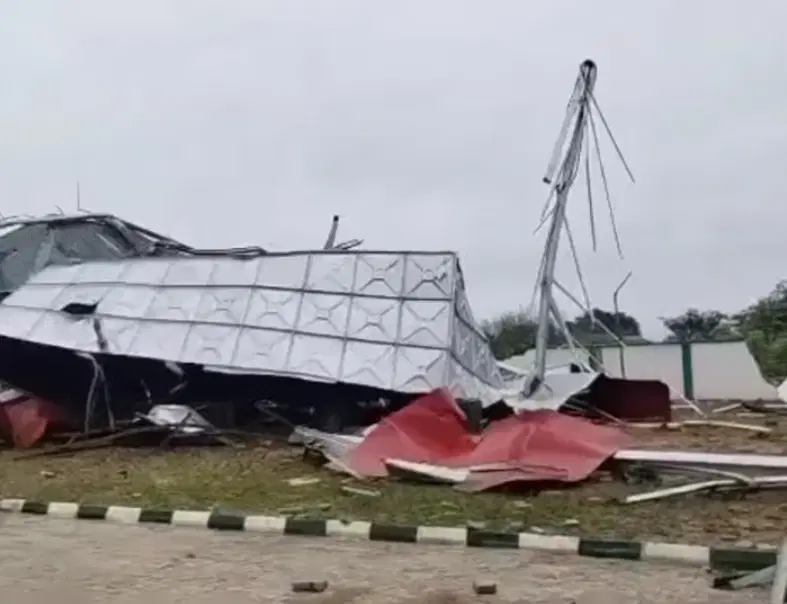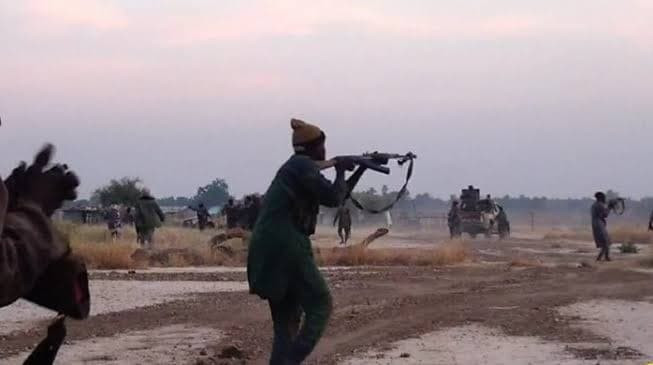In a startling turn of events that has sent shockwaves across the Ogoni region, a newly commissioned water tank meant to serve 14 communities in Khana Local Government Area, Rivers State, collapsed merely three days after it was unveiled. The incident has sparked outrage, raised serious questions about project execution standards, and renewed debates about accountability in developmental projects in Ogoniland.
HYPREP Water Tank: A Project of Hope Turned Disaster
The Hydrocarbon Pollution Remediation Project (HYPREP) had recently commissioned a state-of-the-art water tank at the Gwara water station, a project intended to bring clean, potable water to the Bane and Gwara communities and other surrounding areas. The commissioning, led by the Minister of Environment, Balarabe Lawal, was celebrated as a milestone in the ongoing remediation and infrastructure improvement initiatives in Ogoniland.
However, the promise of clean water was short-lived. Within just 72 hours of the commissioning ceremony, the tank collapsed, leaving local residents stunned and questioning the reliability of government interventions in the region.
Immediate Reactions from the Community
The collapse of the water tank has provoked strong reactions from both local and international stakeholders:
- Movement for the Survival of Ogoni People (MOSOP) described the incident as a glaring example of “substandard work” and criticized the use of contractors who apparently prioritized speed over quality and durability.
- Local Diaspora and Community Groups labeled the collapse as “economic sabotage,” expressing frustration over the continued lack of essential infrastructure despite large sums of money allocated to the region.
- Residents, who had initially celebrated the promise of a consistent water supply, are now left without a dependable source of clean water, further aggravating existing hardships in the area.
HYPREP’s Response and Investigation
In response to the collapse, HYPREP quickly announced the establishment of a high-level investigative committee tasked with uncovering the cause of the failure. The committee’s mandate includes:
- Conducting materials testing to determine whether substandard materials contributed to the structural failure.
- Performing a comprehensive structural assessment of the tank and related installations.
- Reviewing the contractor’s adherence to quality assurance and control standards, including both internal and external monitoring procedures.
HYPREP reassured the public of its commitment to delivering durable and reliable infrastructure and emphasized that lessons from this incident would inform future projects to prevent recurrence.
Implications for Ogoniland Development Projects
This incident is more than just an embarrassing mishap; it reflects systemic challenges in infrastructure development and environmental remediation in the Niger Delta:
- Contractor Accountability: Questions abound regarding the vetting and supervision of contractors. Was the contractor equipped to deliver a project of this scale and significance?
- Quality Assurance Failures: The collapse raises concerns about the effectiveness of HYPREP’s quality control mechanisms and oversight processes.
- Public Trust: For communities in Ogoniland, trust in government-led interventions is fragile. Incidents like this exacerbate skepticism and hinder future cooperation between residents and authorities.
The water tank project is part of HYPREP’s broader mandate following the United Nations Environment Programme (UNEP) report of 2017, which documented extensive environmental pollution in Ogoniland and outlined recommendations for remediation. Despite high-profile investments and multiple projects aimed at restoring livelihoods and the environment, the collapse underscores persistent gaps in project delivery.
What’s Next for Affected Communities?
While the investigation is ongoing, the immediate concerns for the communities affected are tangible:
- Access to Safe Water: Interim measures are urgently needed to provide clean water to residents, given the tank’s collapse.
- Accountability Measures: There is a growing call for sanctions against responsible contractors and for improved monitoring to prevent similar failures.
- Project Review and Reconstruction: HYPREP faces the challenge of not only rebuilding the collapsed tank but also restoring public confidence in its projects.
Communities and stakeholders alike are watching closely, as the response to this incident may set a precedent for how future infrastructure projects are managed in Ogoniland and across other Niger Delta regions.



